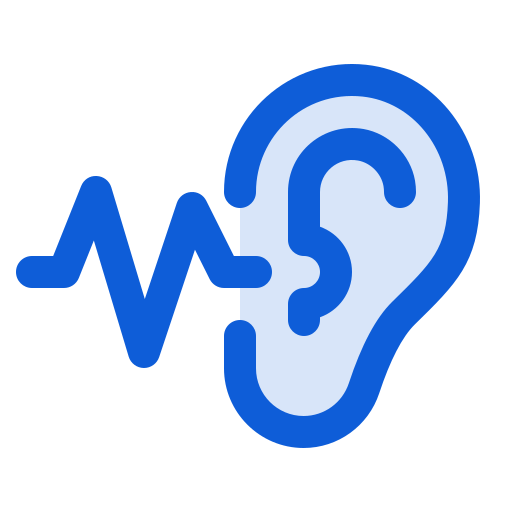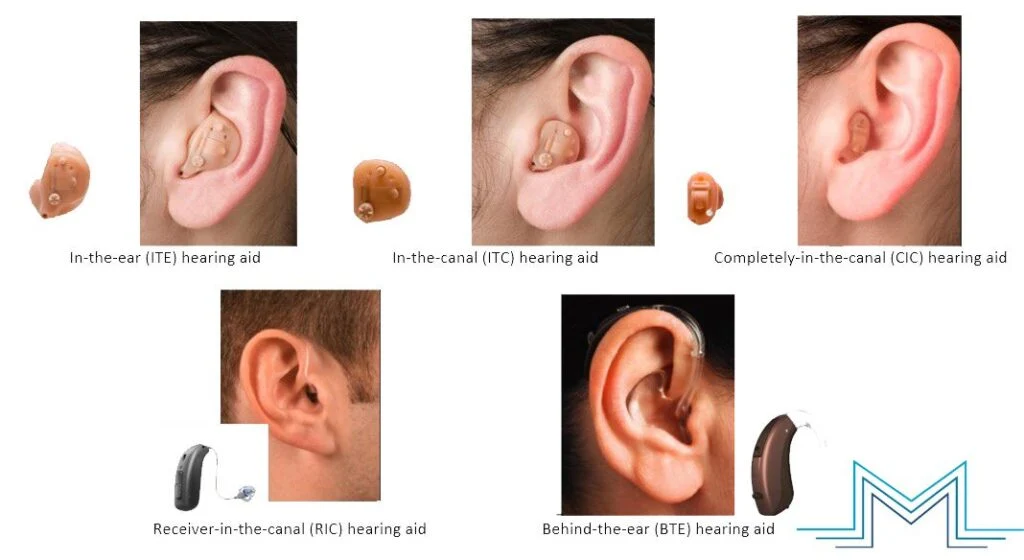Hearing loss affects millions of people in the world, which affects his quality of life and ability to communicate. Hearing loss varies from person to person, and choosing the right hearing aid depends upon the type of hearing loss. At Meenakshi Speech and Hearing Clinic, we provide customized solutions to meet the needs of each individual. In this blog, we can guide you about the different levels of hearing loss, types of hearing aids, and the advanced hearing aid technology that enhances your quality of life due to hearing loss.
Acknowledge the Level of Hearing Loss
Hearing loss is generally classified into four levels: mild, moderate, severe, and profound. Each level of hearing loss requires different types of hearing aid for amplification and support.
-
Mild Hearing Loss
Symptoms of mild hearing loss are difficulty hearing soft voices and recognition in a noisy environment. We recommend low-gain hearing aid use that can amplify speech clarity and environmental sound.
-
Moderate Hearing Loss
Symptoms of moderate hearing loss are difficulty hearing the conversation, mostly in groups or with background noise. It usually asks the other to repeat once again or speak loudly and listen to sound in the loud volume of the TV, phone music, and another audio device. It affects the daily conversation, leading to misinterpretation and facing problems in social and professional life.
The solution is to use a hearing aid with stronger amplification and advanced features like noise reduction and a directional microphone to improve hearing and speech understanding.
-
Severe Hearing Loss
Symptoms of severe hearing loss are difficulty hearing and recognizing speech, even in quiet environments. Reliance on lip reading to understand the conversation and missing the sound of a phone call, alarms, or knocking on the door. It affected the ability to communicate effectively, leading to social differences and decreasing life.
The solution is to use a hearing aid. High power designed to provide you robust amplification and clarity for more pronounced hearing loss is essential. Under some conditions, a cochlear implant was recommended to you.
-
Profound Hearing Loss
Symptoms of profound hearing loss are difficulty understanding amplified speech, heavily lip-reading gestures or sign language for communication, and missing almost all sounds, including loud noises. It impacts communication daily activity and induces social and emotional challenges.
It is recommended that you use a powerful hearing aid or cochlear implant that offers amplification and advanced technology.
Types of Hearing Aid
Hearing aids have come a long way in recent years; they have changed by design, technology, and features. Hearing aids are generally categorized by their wear and their design. Here are the main types of hearing aids:
-
Behind-the-Ear (BTE)
Behind-the-ear hearing aids are connected to an earmold or thin tube that fits in the ear canal. It is ideal for all levels of hearing loss, from mild to profound. It is used by people of all ages, including children. The feature of these hearing aids is that they are durable and easy to handle. It is large, with powerful amplification and a longer battery backup. It is suitable for customization, including telecoil and Bluetooth connectivity.
-
Receiver-in-Canal (RIC)/ Receiver-in-the-Ear (RITE)
It is similar to BTE but added a receiver (speaker), which is placed inside the ear canal and connected by a thin wire. It is used in mild to severe hearing loss. The design of these hearing aids is discreet with a comfortable fit. It reduces the occlusion (plugged-up feeling). It comes with advanced features like directional microphones and wireless connectivity.
-
In-the-Ear (ITE)
This type of hearing aid is completely fit inside the outer ear. It is used in mild to severe hearing loss. It is custom-made to fit the shape of your ear and is easy to insert or remove. It comes with a larger surface area with additional features like volume control and a directional microphone.
-
In-the-Canal (ITC)
It is similar to the ITE hearing aid; these fit partly in the ear canal. It is used for mild to moderate hearing loss. Discreet in design, custom fit, and less visible than ITE hearing aid but smaller in size. It comes with fewer features.
-
Completely-in-the-Canal (CIC)
These hearing aids come in molded to fit deep inside the ear canal; they are almost invisible in the ear. It is used for mild to moderate hearing loss. It has a discreet design and is cosmetic. It reduces the wind noise inside the ear canal, typically lacks manual controls, and may be less suitable for severe hearing loss.
-
Invisible-in-the-Canal (IIC)
The smallest hearing aids available and fit in deeply in the ear canal. It is used for mild to moderate hearing loss. It is virtually invisible when worn, easily custom-fit for maximum comfort, and is best for those prioritizing aesthetics and discretion.
Advance Hearing Aid technology
Hearing aid technology has made many changes in recent years in the wide range of features that improve hearing quality and overall experience. Hearing aids are no longer just simple amplifiers. They are modern devices equipped with advanced technology. Here are some key features of hearing aid technology:
-
Tinnitus Masking
Tinnitus masking generates a soothing sound or white nose to help tinnitus’s ringing and buzzing sounds. It helps relieve those suffering from tinnitus and improves overall hearing comfort. It is customizable by sound to match the user’s preference and tinnitus frequency.
-
Rechargeable Batteries
This hearing aid comes with built-in rechargeable batteries, eliminating the regular battery replacement. It provides an eco-friendly, cost-effective solution with no need to purchase disposable batteries. It is convenient for overnight charging, the same as mobile charging, ensuring that hearing aids are ready for use each day.
-
Bluetooth Connectivity
Hearing aids allow the use of wirelessly connected to a smartphone, tablet, and another Bluetooth device. Its benefit is to call directly through a smartphone and listen to the music and other audio directly to the hearing aid. Enhanced convenience and accessibility for users who daily use electronic devices.
-
Directional Microphones
The directional microphone focuses on the sound coming direction, usually in front of the users. This microphone better understands speech in noisy environments by focusing on the speaker’s voice. It reduces the interference of sound coming from other directions and makes listening comfortable.
-
Noise Reduction
It reduces unwanted background noise, which helps to focus on speech. It is comfortable in noisy areas like restaurants, traffic, and social gatherings. The ability to understand conversation without being distracted by ambient noise.
-
Digital Signal Processing (DSP)
It converts sound waves into a digital signal to allow for precise amplification and sound processing. It is an easily customizable setting to match the user’s hearing profile. It improves the sound quality and reduces background noise.
-
Telecoil (T-coil)
It is a very small copper wire coil in the hearing aids that picks up an electromagnetic signal from a compatible telephone and loop system. It improved hearing in a public place equipped with a loop system, such as theaters, churches, and airports. Enhanced the quality of phone calls. It converts the incoming signal into sound.
-
Artificial Intelligence (AI)
Some hearing aids are equipped with AI algorithms. To continue optimization of the sound quality based on real-time analysis of the listening environment hearing aids have easy-to-use features and design perks for long-range Bluetooth audio connectivity, as well as a long-lasting rechargeable battery.
-
Remote Control and Adjustments
Many modern hearing aids come with a remote control option through a smartphone app and dedicated device. Easy adjustment of volume, program setting, and other features. It easily accesses real-time hearing aid diagnostics and troubleshooting through connected apps.
Conclusion
Selecting the right hearing aid depends on hearing loss and your preference. Understanding the types of hearing aids and the latest technology can help your hearing. At Meenakshi Speech and Hearing Clinic, we offer comprehensive hearing assessment and personalised hearing aid fitting to ensure the best solution for your needs.
Our experienced audiologist can help you choose the perfect hearing aids for your lifestyle and hearing aid needs.
Contact us today and book your appointment through the website and call us. Take the first step towards better hearing.


